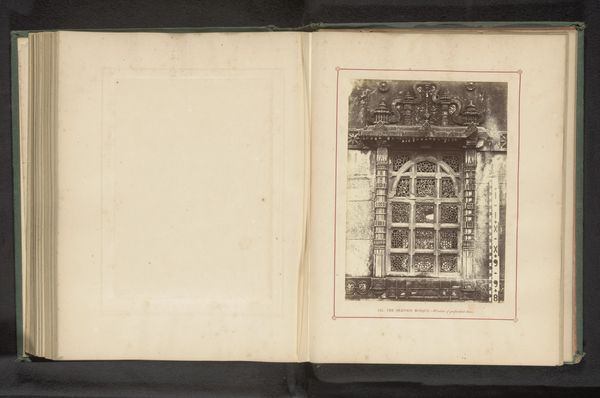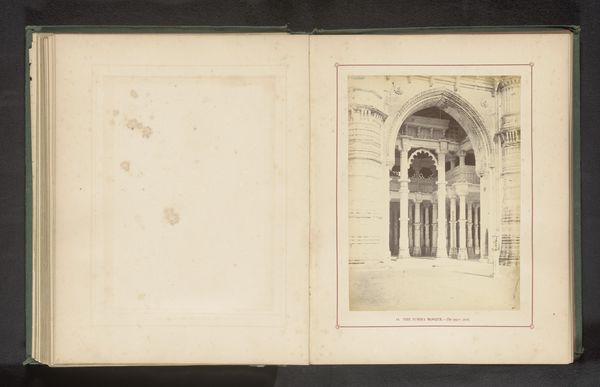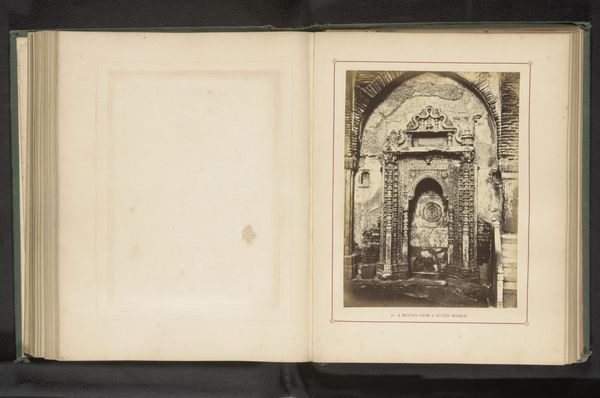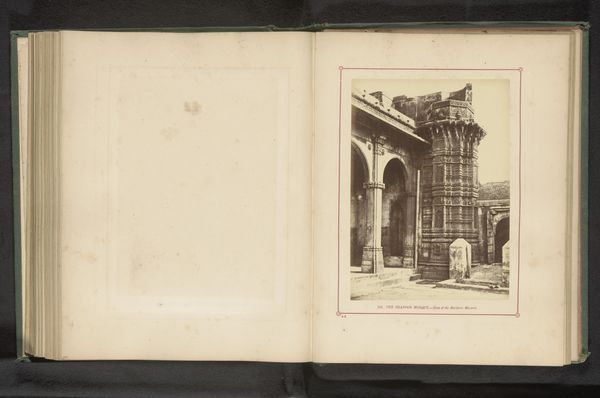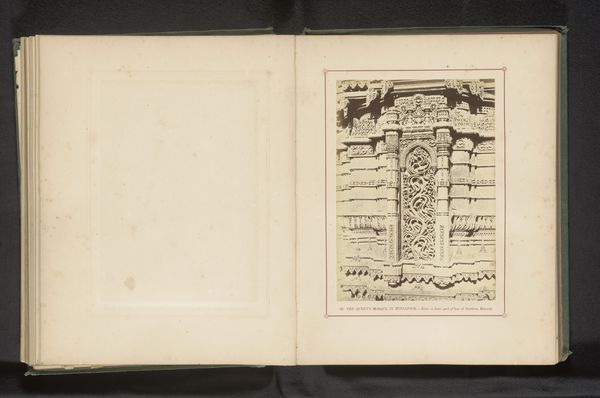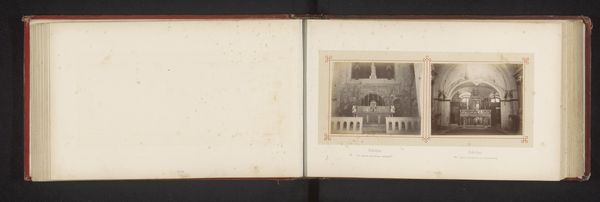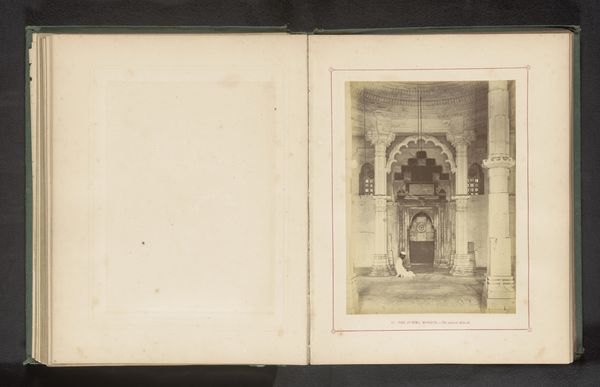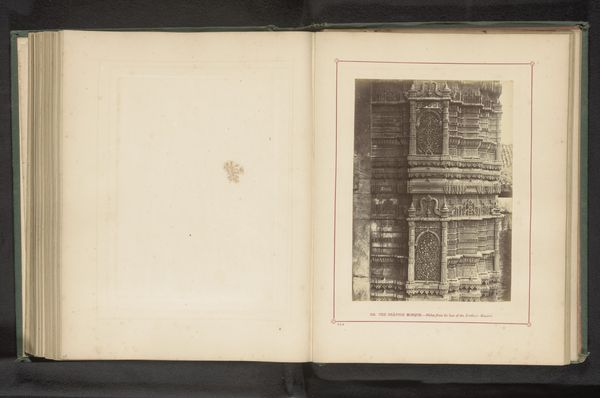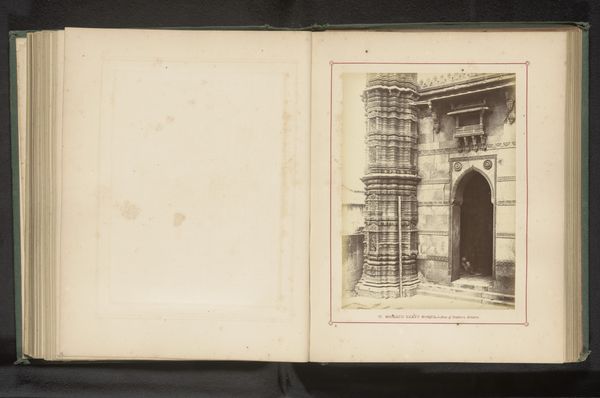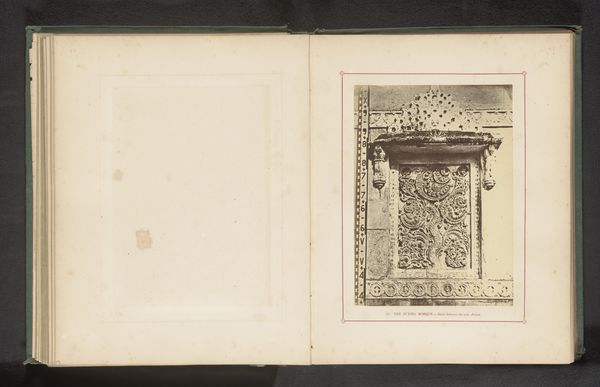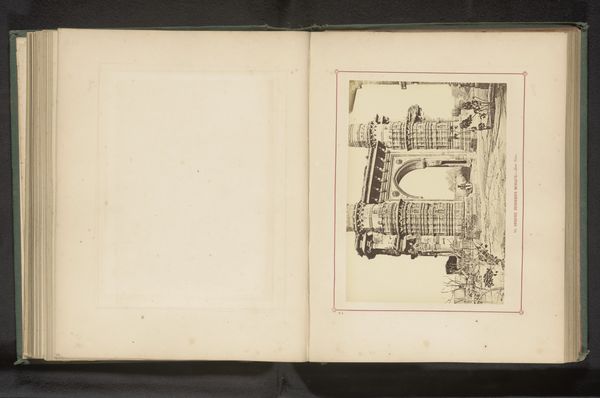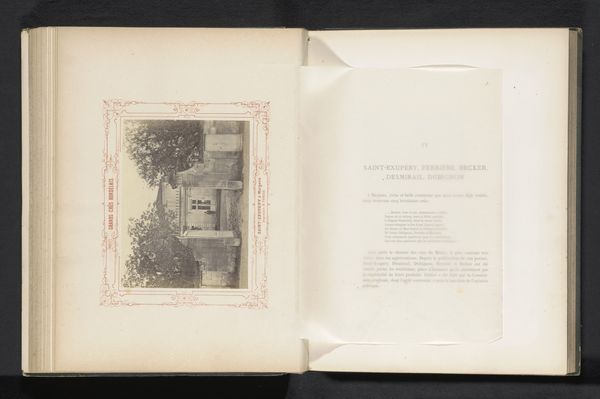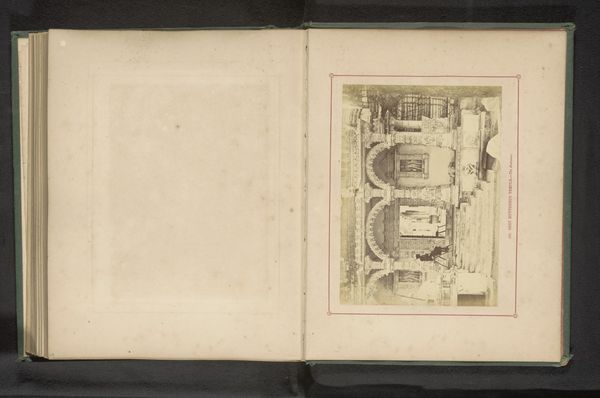
photography, albumen-print, architecture
#
photography
#
ancient-mediterranean
#
cityscape
#
islamic-art
#
albumen-print
#
architecture
Dimensions: height 189 mm, width 136 mm
Copyright: Rijks Museum: Open Domain
This photograph by Thomas Biggs captures a window of the Shapoor Mosque in Ahmedabad. The mosque itself presents an intriguing intersection of architectural styles, blending indigenous Indian craftsmanship with Islamic design principles. Consider when and why this image was made. During the 19th century, the British colonial government invested in extensive documentation of Indian architecture. Photography played a crucial role in this project. Beyond mere record-keeping, these images also served to classify and understand the colonized land. How did British photographers frame Indian architecture? Did they emphasize the ‘exotic’ and ‘oriental’ aspects, thus reinforcing colonial power structures? Did they respect cultural differences? By studying colonial-era photographs alongside historical texts, architectural plans, and local accounts, we can begin to unpack the complex relationship between art, power, and cultural identity in colonial India. Understanding the institutional context helps us to interpret the image beyond its aesthetic qualities.
Comments
No comments
Be the first to comment and join the conversation on the ultimate creative platform.
